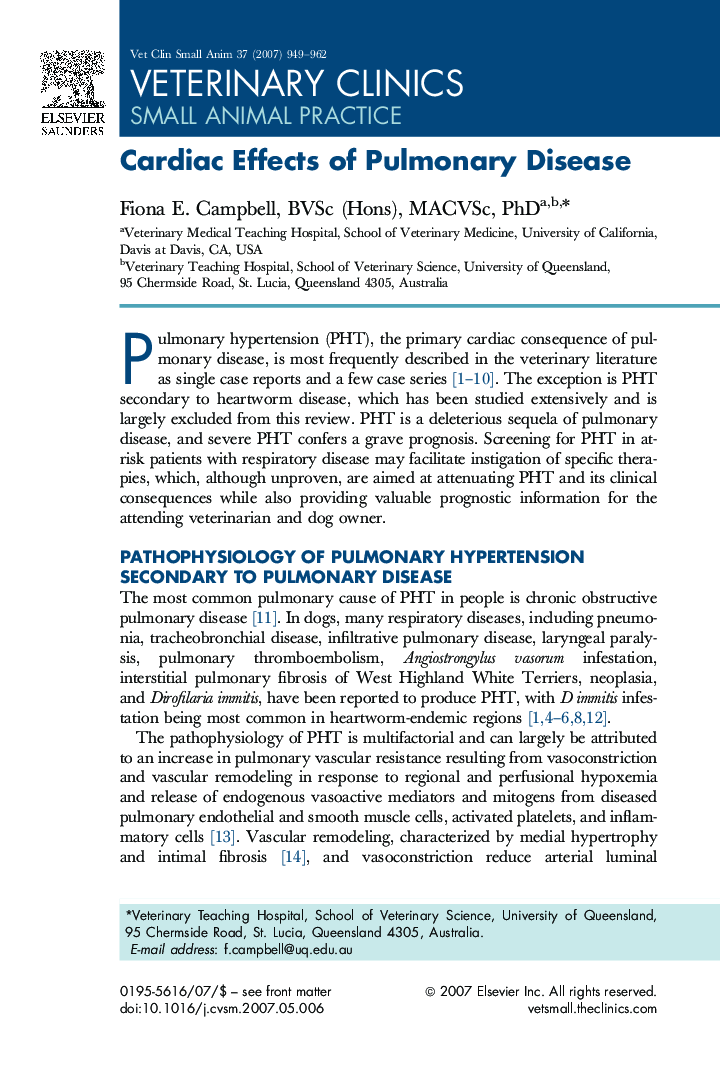| Article ID | Journal | Published Year | Pages | File Type |
|---|---|---|---|---|
| 2461216 | Veterinary Clinics of North America: Small Animal Practice | 2007 | 14 Pages |
Abstract
Pulmonary hypertension (PHT) is the primary cardiac consequence of pulmonary disease. It develops as alveolar hypoxia of pulmonary disease, coupled with vasoactive and mitogenic substances released from pulmonary endothelial and vascular smooth muscle cells damaged by the primary disease process, mediates arterial vasoconstriction and vascular remodeling to raise pulmonary vascular resistance. Independent of the underlying pulmonary disease, PHT produces clinical signs of respiratory distress, exercise intolerance, syncope, and right heart failure. Diagnosis of PHT is made by estimation of pulmonary artery pressures by means of continuous-wave Doppler echocardiographic assessment of tricuspid or pulmonic regurgitant flow velocity. Treatment of PHT is directed at the underlying pulmonary disease but may also aim to attenuate pulmonary artery pressure and limit the clinical sequelae of PHT. No treatments are of proven benefit in veterinary patients; irrespective of the nature of the inciting pulmonary disease, the prognosis is often grave.
Related Topics
Health Sciences
Veterinary Science and Veterinary Medicine
Veterinary Science
Authors
Fiona E. BVSc (Hons), MACVSc, PhD,
